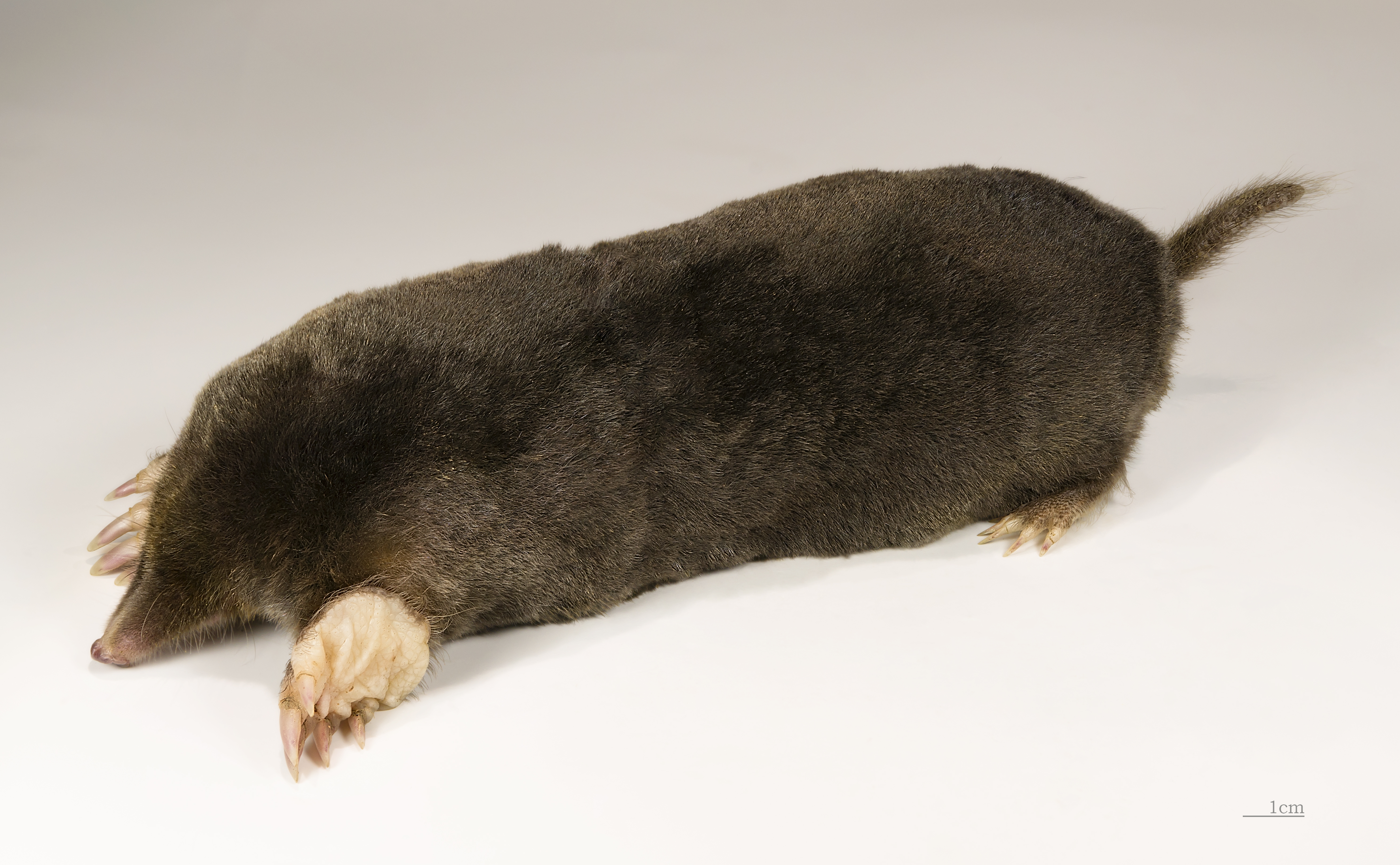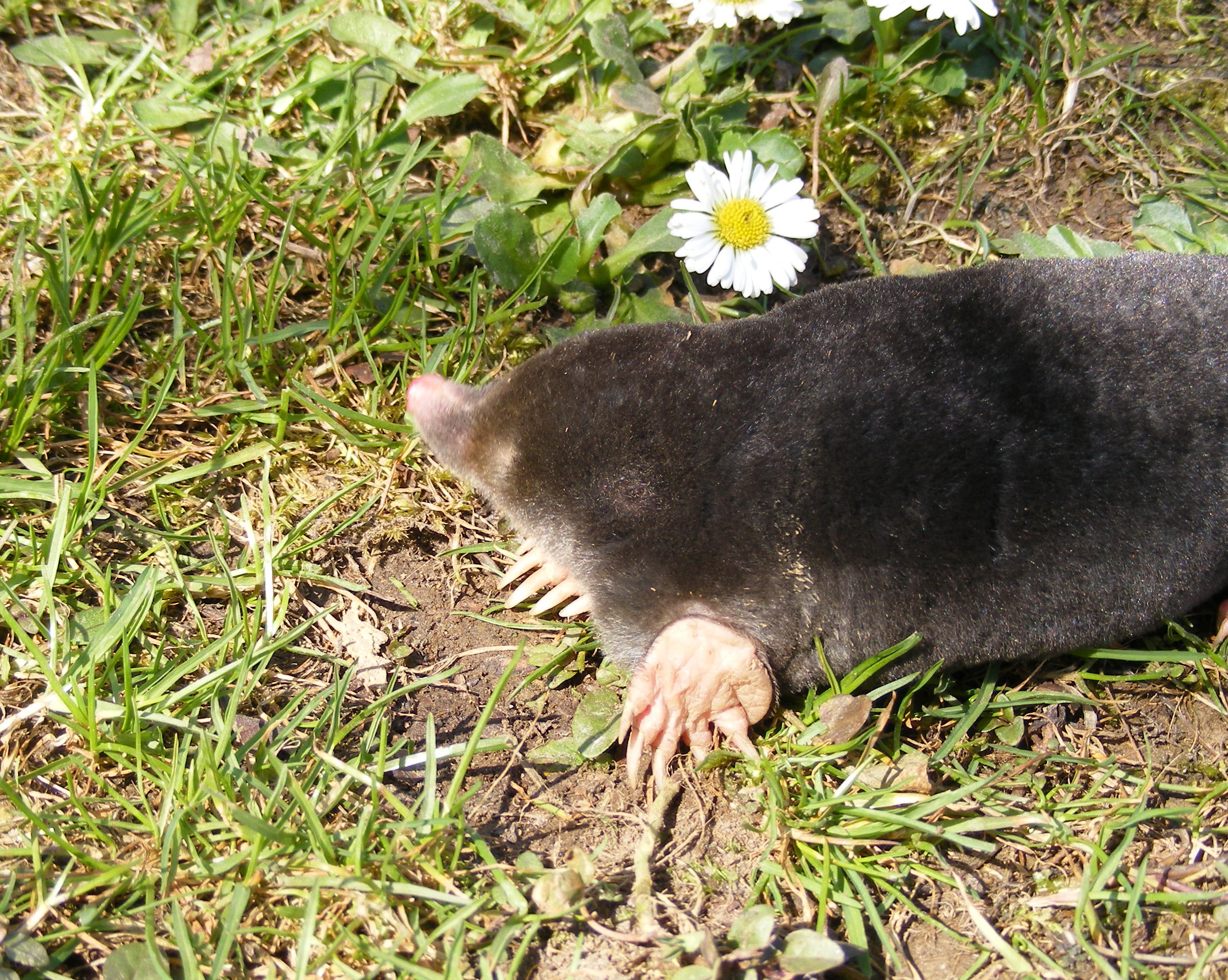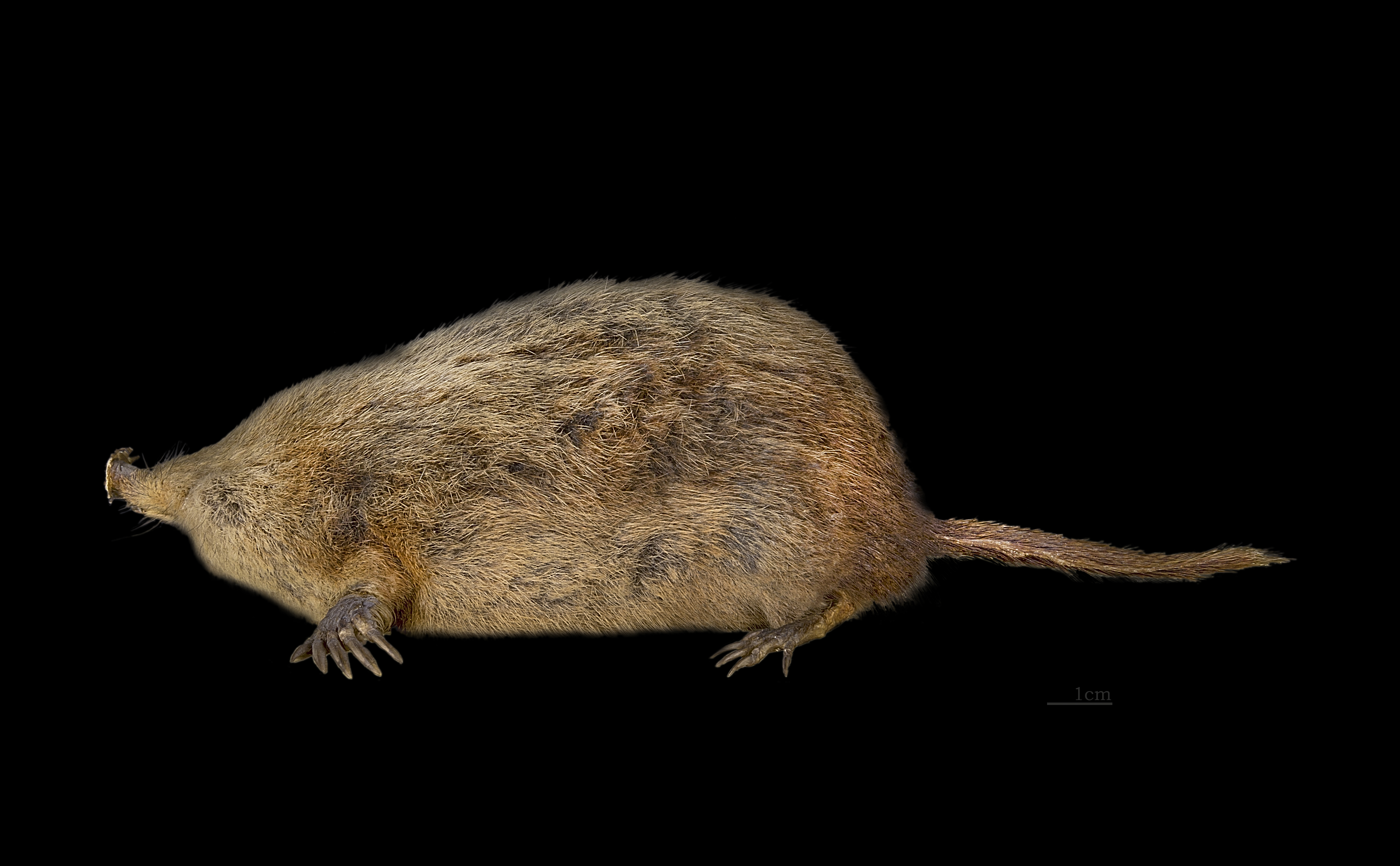|
Talpidae
The family Talpidae () includes the moles (some of whom are called shrew moles and desmans) who are small insectivorous mammals of the order Eulipotyphla. Talpids are all digging animals to various degrees: moles are completely subterranean animals; shrew moles and shrew-like moles somewhat less so; and desmans, while basically aquatic, excavate dry sleeping chambers; whilst the quite unique star-nosed mole is equally adept in the water and underground. Talpids are found across the Northern Hemisphere of Eurasia and North America (although none are found in Ireland nor in the Americas south of northern Mexico), and range as far south as the montane regions of tropical Southeast Asia. The first talpids evolved from shrew-like animals which adapted to digging late in the Eocene in Europe. '' Eotalpa anglica'' is the oldest known mole, it was discovered in the Late Eocene deposits of Hampshire Basin, UK. The most primitive living talpids are believed to be the shrew-like moles, ... [...More Info...] [...Related Items...] OR: [Wikipedia] [Google] [Baidu] |
Scalopinae
The Scalopinae, or New World moles, are one of three subfamilies of the family Talpidae, which consists of moles and mole-like animals; the other two subfamilies being the Old World talpids (the Talpinae) and the Chinese shrew-like moles (Uropsilinae). The Scalopinae are the only Talpidae subfamily to consist entirely of undisputed mole (animal), moles and no mole-like close relatives such as shrew-moles or desmans. They are found in temperate North America and parts of China. In North America, they exist virtually everywhere soil conditions permit except northern Canada and those areas of northeastern Mexico where the soil is too sandy. Despite this subfamily being referred to as "New World moles", there are also two species in the mountains of China, each in their own Monotypic taxon, monotypic genus. Morphological and paleontological analyses indicate that both tribes in the subfamily originated in Eurasia during the Oligocene and migrated to North America during the Neogene, ... [...More Info...] [...Related Items...] OR: [Wikipedia] [Google] [Baidu] |
Uropsilinae
The shrew moles or shrew-like moles (''Uropsilus'') are shrew-like members of Talpidae, the mole family of mammals endemic to the forested, high-alpine region bordering China, Myanmar, and Vietnam. They possess a long snout, a long slender tail, external ears, and small forefeet unspecialized for burrowing. Although they are similar to shrews in size, external appearance, and, presumably, ecological habits, they are nevertheless Talpidae, talpids and considered true mole (animal), moles, as they share a full zygomatic arch with all other moles, while this arch is completely absent in shrews. The genus is the only one of the subfamily Uropsilinae, which is one of the three main subfamilies of Talpidae, the other two being Talpinae, or Old World moles and relatives; and the Scalopinae, or New World moles. Although little is currently known regarding any aspect of their natural history, the Uropsilinae are thought to be the most ancestral group of moles, and as such, very similar t ... [...More Info...] [...Related Items...] OR: [Wikipedia] [Google] [Baidu] |
Talpinae
The subfamily Talpinae, sometimes called "Old World moles" or "Old World moles and relatives", is one of three subfamilies of the mole family Talpidae, the others being the Scalopinae, or New World moles, and the Uropsilinae, or shrew-like moles. These mammals in the order Eulipotyphla mainly live under ground. The species in this group are all found in Eurasia, except '' Neurotrichus gibbsii''. Most species have front paws specialized for tunneling which are clawed and face outwards from the body. They mainly eat insects and other small invertebrates. Taxonomy Although most systems recognize this subfamily as monophyletic, some studies indicate that it as currently defined is paraphyletic with respect to the Scalopinae, with Desmanini being the most basal member, then a clade comprising Neurotrichini, Scaptonychini, and Urotrichini, then the Condylurini (otherwise classified in the Scalopinae), and then Talpini and Scalopini being sister groups to one another. The list of ... [...More Info...] [...Related Items...] OR: [Wikipedia] [Google] [Baidu] |
Shrew-like Moles
The shrew moles or shrew-like moles (''Uropsilus'') are shrew-like members of the mole family of mammals endemic to the forested, high-alpine region bordering China, Myanmar, and Vietnam. They possess a long snout, a long slender tail, external ears, and small forefeet unspecialized for burrowing. Although they are similar to shrews in size, external appearance, and, presumably, ecological habits, they are nevertheless talpids and considered true moles, as they share a full zygomatic arch with all other moles, while this arch is completely absent in shrews. The genus is the only one of the subfamily Uropsilinae, which is one of the three main subfamilies of Talpidae, the other two being Talpinae, or Old World moles and relatives; and the Scalopinae, or New World moles. Although little is currently known regarding any aspect of their natural history, the Uropsilinae are thought to be the most ancestral group of moles, and as such, very similar to the primitive talpid from which ... [...More Info...] [...Related Items...] OR: [Wikipedia] [Google] [Baidu] |
Eulipotyphla
Eulipotyphla (, which means "truly fat and blind") is an order of mammals suggested by molecular methods of phylogenetic reconstruction, which includes the laurasiatherian members of the now-invalid polyphyletic order Lipotyphla, but not the afrotherian members (tenrecs, golden moles, and otter shrews, now in their own order Afrosoricida). Eulipotyphla comprises the hedgehogs and gymnures (family Erinaceidae, formerly also the order Erinaceomorpha), solenodons (family Solenodontidae), the desmans, moles, and shrew-like moles (family Talpidae) and true shrews (family Soricidae). True shrews, talpids and solenodons were formerly grouped in Soricomorpha; however, Soricomorpha has been found to be paraphyletic, since erinaceids are the sister group of shrews, and they are more closely linked to the Carnivora order; (such as cats, dogs, bears, skunks, badgers, etc.). It is the sister clade of Scrotifera; together, they make up Laurasiatheria. Classification * Order Eulipoty ... [...More Info...] [...Related Items...] OR: [Wikipedia] [Google] [Baidu] |
Mole (animal)
Moles are small mammals adapted to a subterranean lifestyle. They have cylindrical bodies, velvety fur, very small, inconspicuous eyes and ears, reduced hindlimbs, and short, powerful forelimbs with large paws adapted for digging. The word “mole” refers to any species in the family Talpidae, which means “mole” in Latin. Moles are found in most parts of North America, Europe and Asia. Moles may be viewed as pests to gardeners, but they provide positive contributions to soil, gardens, and ecosystem, including soil aeration, feeding on slugs and small creatures that eat plant roots, and providing prey for other wildlife. They eat earthworms and other small invertebrates in the soil. Terminology In Middle English, moles were known as ''moldwarp''. The expression "don't make a mountain out of a molehill" (which means "exaggerating problems") was first recorded in Tudor times. By the era of Early Modern English, the mole was also known in English as ''mouldywarp'', a wor ... [...More Info...] [...Related Items...] OR: [Wikipedia] [Google] [Baidu] |
Desman
The desman, a snouted and naked-tailed diving insectivore of the tribe Desmanini (also considered a subfamily, Desmaninae), belongs to one of two Eurasian species of the mole family, Talpidae. This tribe consists of two monotypic genera of semiaquatic insectivores found in Europe: one in Russia and the other in the northwest of the Iberian peninsula and Pyrenees. Both species are considered to be vulnerable. They have webbed paws and their front paws are not well-adapted for digging. Desmans were much more diverse and widespread during the Miocene, with one genus, ''Gaillardia'', being present in North America. Both living species are thought to have derived from the fossil genus '' Archaeodesmana.'' The list of species is: *Genus ''Desmana'' **Russian desman (''D. moschata'') *Genus ''Galemys'' **Pyrenean desman (''G. pyrenaicus'') * Genus †'' Archaeodesmana'' Miocene-Pliocene, Europe * Genus †''Gaillardia'' Miocene, North America * Genus †'' Mygalinia'' Late Miocene, H ... [...More Info...] [...Related Items...] OR: [Wikipedia] [Google] [Baidu] |
Star-nosed Mole
The star-nosed mole (''Condylura cristata'') is a small semiaquatic mole (animal), mole found in moist, low areas in the northern parts of North America. It is the only Extant taxon, extant member of the tribe Condylurini and genus ''Condylura'', and it has more than 25,000 minute sensory receptors in touch organs, known as Eimer's organs, with which this hamster-sized mole feels its way around. With the help of its Eimer's organs, it may be perfectly poised to detect seismic wave vibrations. The nose is about 1 cm in diameter with its Eimer's organs distributed on 22 appendages. Eimer's organs were first described in the European mole in 1871 by German zoologist Theodor Eimer. Other mole species also possess Eimer's organs, though they are not as specialized or numerous as in the star-nosed mole. Because the star-nosed mole is functionally blind, the snout was long suspected to be used to detect electrical activity in prey animals, though little, if any, empirical support ... [...More Info...] [...Related Items...] OR: [Wikipedia] [Google] [Baidu] |
Talpa (mammal)
''Talpa'' is a genus in the mole family Talpidae. Among the first taxa in science, Carolus Linnaeus used the Latin word for "moles", ''talpa'', in his Regnum Animale to refer to the commonly known European form of mole. The group has since been expanded to include 13 extant species, found primarily in Europe and western Asia. The European mole, found throughout most of Europe, is a member of this genus, as are several species restricted to small ranges. One species, Père David's mole, is data deficient. These moles eat earthworms, insects, and other invertebrates found in the soil. The females of this genus have rudimentary male features such as Cowper's glands and a two-lobed prostate. A group of scientists has suggested that they are true hermaphrodites; however, others state that they are fully functional females. There are 13 species in this genus: * Altai mole, ''T. altaica'' * Aquitanian mole, ''T. aquitania'' * Blind mole, ''T. caeca'' * Caucasian mole, ''T. caucas ... [...More Info...] [...Related Items...] OR: [Wikipedia] [Google] [Baidu] |
Russian Desman
The Russian desman (''Desmana moschata'') (russian: выхухоль ''vykhukhol'') is a small semiaquatic mammal that inhabits the Volga, Don and Ural River basins in Russia, Ukraine and Kazakhstan. It constructs burrows into the banks of ponds and slow-moving streams, but prefers small, overgrown ponds with abundance of insects, crayfish and amphibians. The Russian desman often lives in small groups of two to five animals, that are usually not related, and appears to have a complex (but largely unstudied) communication and social system. Taxonomy The Russian desman is one of two surviving species of the tribe '' Desmanini'', the other being the Pyrenean desman. Despite its outward similarity to muskrats (a rodent), the Russian desman is actually part of the mole family Talpidae in the order Eulipotyphla. Like other moles, it is functionally blind and obtains much of its sensory input from the touch-sensitive Eimer's organs at the end of its long, bilobed snout. However, the h ... [...More Info...] [...Related Items...] OR: [Wikipedia] [Google] [Baidu] |
Pyrenean Desman
The Pyrenean desman also called Iberian desman (''Galemys pyrenaicus'') is a small semiaquatic, globally threatened mammal related to moles and shrews, and, along with the Russian desman (''Desmana moschata''), is one of the two extant members of the tribe Desmanini. The species occurs in north and central parts of Spain and Portugal, French Pyrenees, and Andorra, but severe range contractions have been documented across its geographic distribution. Description The Pyrenean desman is long with a rounded scale-covered tail of , and weighs . Pyrenean desmans have a long, sensitive nasal trompe provided with hypertrophic vibrissae and chemo-/mechanosensitive Eimer’s organs helping prey detection, and large webbed feet with fringed hairs to increase the swimming surface, and can close off their nostrils and ears to stop water penetration. The desman's body is covered in dark, brownish fur, with the exception of its tail and nose. The nose is black and is covered in vibrissae ... [...More Info...] [...Related Items...] OR: [Wikipedia] [Google] [Baidu] |
Eastern Mole
The Eastern Mole or Common Mole (''Scalopus aquaticus'') is a medium-sized North American mole. It is the only member of genus ''Scalopus''. It is found in forested and open areas with moist sandy soils in northern Mexico, the eastern United States and the southwestern corner of Ontario in Canada. The eastern mole has grey-brown fur with silver-grey underparts, a pointed nose and a short tail. It is about in length including a long tail and weighs about . Its front paws are broad and spade-shaped, specialized for digging. It has 36 teeth. Its eyes are covered by fur and its ears are not visible. The eastern mole spends most of its time underground, foraging in shallow burrows for earthworms, grubs, beetles, insect larvae and some plant matter. It is active year-round. It is mainly solitary except during mating in early spring. The female has a litter of two to five young in a deep underground burrow. Subspecies A majority of the moles throughout their range are ''Scalopus ... [...More Info...] [...Related Items...] OR: [Wikipedia] [Google] [Baidu] |




_skeleton_2.jpg)